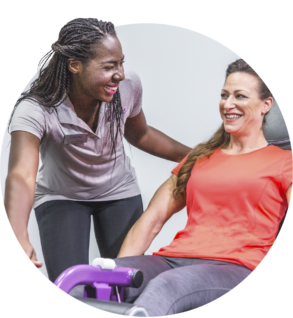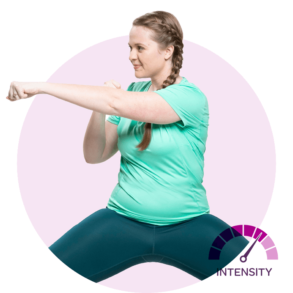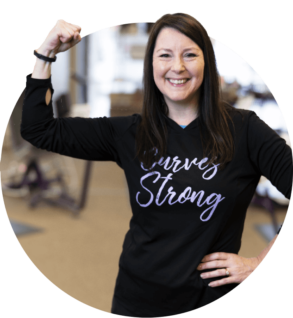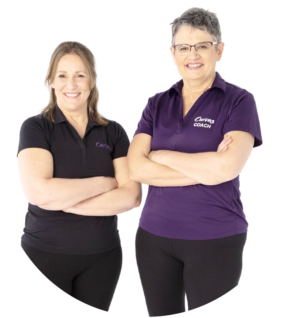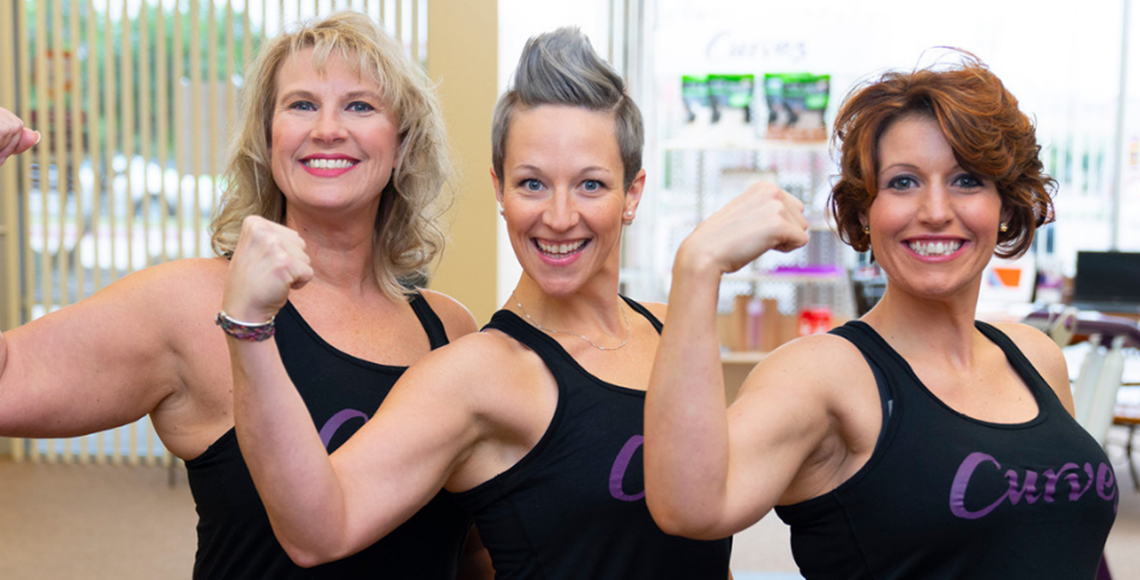The Truth About the Scales
At Curves, we’ve heard it all when it comes to women’s feelings about the scale.
“That’s not happening!”
“The scale is evil.”
“I’m just here for my health. I don’t need to know what I weigh.”
We get it. For many women, the scale can induce intense emotions. It’s common for us to get off the scale and judge ourselves based on the number we see. We celebrate lower numbers and get disappointed or discouraged with higher numbers.
The Problem with Weight Scales
The average household scale only tells you your total body mass. The problem with this is that it’s just one data point about your health – it’s not the entire story! Body mass can change due to a variety of factors. Most importantly, weight loss or weight gain doesn’t always reflect real health and fitness progress.
Another common way body weight is measured is through body mass index (BMI). BMI is used to see whether you’re in a healthy weight range relative to your height. It can also be an easy method to categorize weight, but it’s only an estimate – as it doesn’t take into account your age, ethnicity, or gender.
While body mass index gives you a weight category (i.e. underweight, healthy weight, overweight, or obese), it doesn’t provide an accurate measurement of your body composition. This can be disheartening for women who are working hard to maintain their health and wellbeing with regular total body workouts and sticking to a weight loss eating plan. As we all know, we’re all different and come in all shapes and sizes!
If you’re sticking with your regular strength training workouts, you’ll build muscle across your whole body, which may actually increase your body mass. But at the same time, it’s also helping to decrease your overall body fat. So, changes in your weight may move slowly when looking at the scales, making you feel less motivated and more likely to give up on your workout plan for women. That’s why you need a way to measure your progress with real insights into your body!
At Curves, we want you to take charge of your body and truly understand the number on the scales and empower you with the information you need to move you forward in your weight loss journey!
Curves women’s gyms have now introduced Evolt body scanners across select locations in the United States, Canada, Australia, and New Zealand. These body composition scans offer 40 different measurements to give members a better glimpse at their overall health and understand their true weight as shown on the scales.
Curves Body Composition scanning uses bioelectrical impedance analysis (BIA) to measure the resistance of the current flowing through tissue, which determines the amount of muscle, bone mineral, hydration, and fat mass you have. BIA technology is well-researched to provide an accurate breakdown of your body composition based on your age, gender, weight, height and impedance measurement – so you can now better understand your body mass.
We believe that knowledge is power, and seeing your body composition testing results allows you to make changes toward improvements across your health and fitness.
If you want to learn more about body composition analysis* – or give one a try – contact your local Curves today!
Learn more below:
What is a Body Composition Analysis?
Body composition testing is a more complex set of scales that provides detailed information data about your body mass. A body composition analysis is specific to the individual and a far better measurement of your weight than traditional scales or BMI. This is because it differentiates between your muscle mass (Lean Body Mass), fat mass (Body Fat Mass), water mass (Total Body Water). What do these mean?
Lean Body Mass
Lean Body Mass, sometimes known as “Fat-Free Mass”, reflects your total body weight minus your body fat mass. It consists of the weight of everything in your body (such as your organs, skin, bones!), as well as body water and muscle mass. As the weight of your body structure doesn’t change much over time, it’s a good indicator for measuring your health and fitness progress, because you can look at changes in your Skeletal Muscle Mass and Total Body Water.
Skeletal Muscle Mass
Skeletal Muscle Mass is part of your Lean Body Mass, and is highlighted in body composition scans because it’s the only type of muscle that can be actively grown and developed through regular full-body workouts and a healthy eating plan.
It’s the figure you want to see increase over time as it means improved strength across your body! Increasing your muscle mass through strength training will help improve your metabolic rate, allowing you to burn more calories at rest and can protect you against developing weight-related illnesses, such as diabetes and heart disease.
Total Body Water
Almost every cell in your body contains water, making up 45-65% of your body weight1. Total Body Water is a component of Lean Body Mass. It’s included in body composition scanning alongside Skeletal Muscle Mass. It’s important to know because it can impact your total body mass, given that it fluctuates throughout the day, and can also be affected by other factors such as inflammation, medications, hormonal changes, and dehydration2.
An increase in Lean Body Mass may just be more water in the body at the time of the scan, so it’s good to know!
Body Fat Mass
Body Fat Mass is fairly self-explanatory – it reveals how much body fat makes up your weight at both the surface (subcutaneous) and internal (visceral) level. This differs from body fat percentage, which is just a percentage of your total body weight.
Body Fat Mass is a measurement delivered as a number, so it’s like a score that gives you an easy way to understand your body fat, while also setting a benchmark to show your body’s change over time. Reducing your Body Fat Mass will have numerous benefits for your overall health and wellbeing and will contribute to a healthy body fat percentage.
What is a healthy body fat percentage for women?
A healthy body fat percentage can vary depending on your age, gender, and level of fitness. Typically, women hold a higher body fat percentage in comparison to men and the healthy range of body fat percentage increases as you age. According to the American Journal of Clinical Nutrition3, the average female body fat percentage by age is as below – anything within the average range or below is considered in the healthy range!
| Age | Body Fat Percentage for Women |
| 20-39 | 21% – 32% |
| 40-59 | 23% – 33% |
| 60-79 | 24% – 35% |
*At participating locations
The Curves women’s gym workout is convenient, combining strength training and cardio plus stretching – all in just 30 minutes – to strengthen your whole body. For more information about Curves and the full body workouts the Curves Circuit provides, visit ‘Why Curves‘.
Sources

